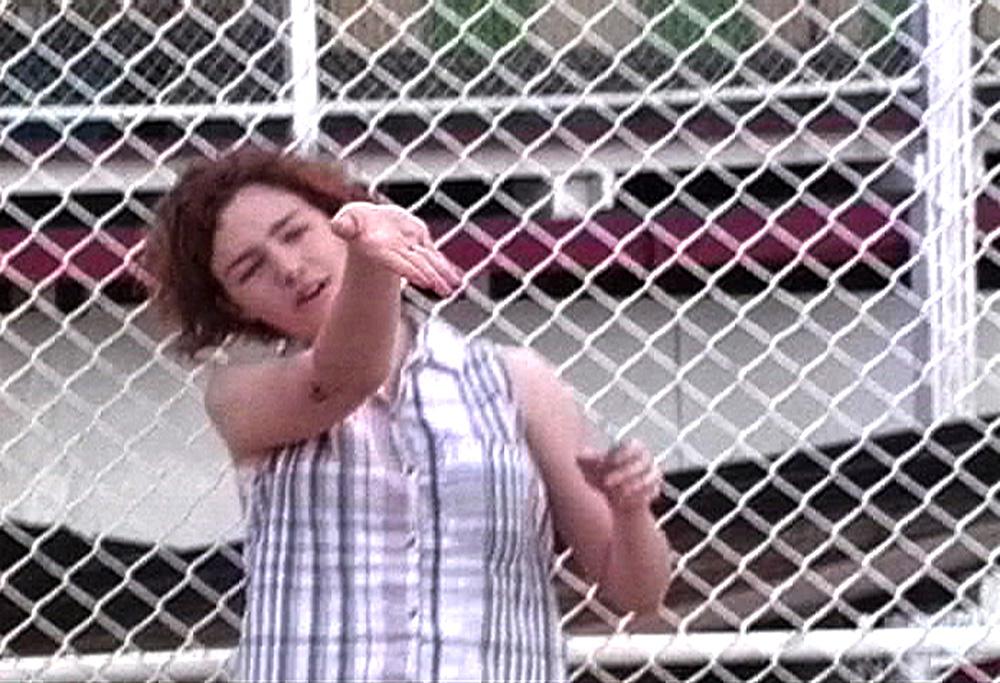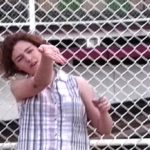When the roof of the Prairie Art Gallery in Grande Prairie collapsed last year, for instance, local artist Ed Bader took advantage of the art community’s venue dilemma by organizing “Artery”: a series of video projections installed in the city’s downtown storefronts throughout the month of January, when residents experience nearly 14 hours of darkness per day.
This year, Toronto-based artist and curator Micah Lexier expands the second edition of the city’s winter exhibition to include an interactive audio work, a series of weekly newspaper projects, screenings at the local cinema, a free comic book and even a downtown home on loan from a local family for Kelly Mark’s Glow House project. Titled “Here Now or Nowhere” the exhibition brings international artists and newly commissioned projects to the streets of Grande Prairie, encouraging subtler, more nuanced encounters between artists and the public. Recently, Lexier chatted by phone about working as a curator, creating the anti-blockbuster art festival and the importance of intergenerational artistic exchange.
Gabrielle Moser: I was wondering if you could tell me a bit about the inspiration for the title of the show. I noticed it functions as an anagram of the word “nowhere” but was wondering how it might further relate to the theme of the exhibition.
Micah Lexier: Yes, it’s an anagram, which is one of my favourites, but that’s sort of an extra thing. There’s a crazy story about the title—I had to call the gallery to give them a suggested title of the show and as I was walking up Ossington Street in Toronto from my house, I noticed some graffiti which I misread as “Be here now or nowhere,” which I thought was great because it suggested being or living in the moment. So it’s what I suggested to the gallery and then Robert Steven, the Prairie Gallery’s director, said that if we dropped the “be” that it would be a tidier play on words. So in that way it was a collaborative title. It’s also about Grande Prairie being “nowhere” and us bringing in artists from all over the world into the city—playing with boundaries of inside/outside, here/there, the slippages of misunderstanding meanings.
GM: In the past few years, you have been increasingly exhibiting your work alongside shows of other artists’ works that you have curated. How does curating fit into your practice as a visual artist?
ML: Lately, it [the curating] has become a much bigger part of my artistic practice. I don’t know if it will continue to develop like that in an ongoing way, though. I think there are a couple of aspects to why I began curating: moving back to Toronto and having a new relationship with the city and the artists in it was certainly one of them, but it was also a realization that when I first lived here I was a younger artist and now I’m not such a young artist. When I was a younger artist, people did me a lot of favours by writing reviews of my work and supporting what I as working on and I realized that doesn’t come from nowhere. It’s the responsibility of more established artists to do these things and to make them happen, and curating is one way of doing that. I also thought, well, I’m a pretty organized guy and a pretty opinionated guy, so I wanted to encourage people to see these artists’ work.
In my own artistic practice, the vitrine exhibitions I’ve been making have really been about using found elements: bits of paper I find or notes and integrating them into the work. There’s a nice correlation between using found items and working as a curator. This show, though, has been very much about me putting on a “curator hat”—not considering it a part of my other work, but seeing it as a distinctly curatorial job. I am increasingly finding my own work and curation merging, or getting closer, however.
GM: How would you characterize this exhibition of contemporary art in public compared to festivals like Nuit Blanche and Luminato?
ML: I think this exhibition is more nuanced than some of those festivals. They tend to be more “blockbustery”—to try and do something big in a small amount of time. This exhibition is much smaller and rolls out over a longer period of time. When you have one video in a storefront window for a month, it’s okay if you don’t notice it right away; you can come back to it slowly over a longer period. We’re not trying to necessarily grab you right away, but to build an experience over time.
GM: Many of your previous projects as an artist have brought contemporary art projects to public and non-gallery venues—I’m thinking of your installation in the Sheppard and Leslie subway station, or the large-scale sculpture that was commissioned for Calgary’s Victoria Park in particular. What are some of the challenges and benefits of creating or commissioning works for public spaces?
ML: Well, the benefits include that if you carefully select things according to what you think people wouldn’t expect to see and bring it to them, then it might interest them in a way that might not work in a gallery setting. I try to select work that, if people gave it a chance and took a look at it, they would enjoy. Having the positive reinforcement of even working with a store owner who becomes interested in the project they’re hosting is a big benefit in and of itself.
GM: Which projects in “Here Now or Nowhere” are you most excited about?
ML: The newspaper project that Michael Dumontier, Kim Moodie and Erica Van Horn are creating, but maybe because it’s the project I would most like to be involved with as an artist. Each artist has a full page in the newspaper to use and you’ll open a newspaper and there will be this really great, graphic black and white project. So for me, conceptually and graphically the newspaper is the most interesting. This is the project viewers have asked for the least because they’ll open the paper and it will be there, so in that way it will have the greatest viewership. It’s the project that is the most surprising and is something I’d like to continue afterwards. I think the audience will be really excited when they open it up and see, for instance, a project by Kim Moodie made specifically for the exhibition that is a really dense, graphic drawing.
Other installation projects, like Germaine Koh’s telephone piece Call, (which randomly calls a project participant who is willing to have a conversation with the viewer when the handset is lifted) is already a real hit. Some of the projects, like Kelly Mark’s Glow House, are new versions of older projects, but three of the projects in the exhibition are world premieres, which is really exciting: along with Kim Moodie’s newspaper drawing, Jan Peacock is creating a new video installation called Bystander in a storefront vitrine and Adad Hannah is debuting two new vertically oriented videos depicting figures holding large mirrors in the Musée National des Beaux-Arts du Québec and those are brand new in his practice.
Online versions of “Here Now or Nowhere” installations can be seen at www.herenowornowhere.com.

 Neil Goldberg Describing the Cyclone 1998 Video still
Neil Goldberg Describing the Cyclone 1998 Video still








